7 houseplants you can grow without soil
No soil required for these popular plants
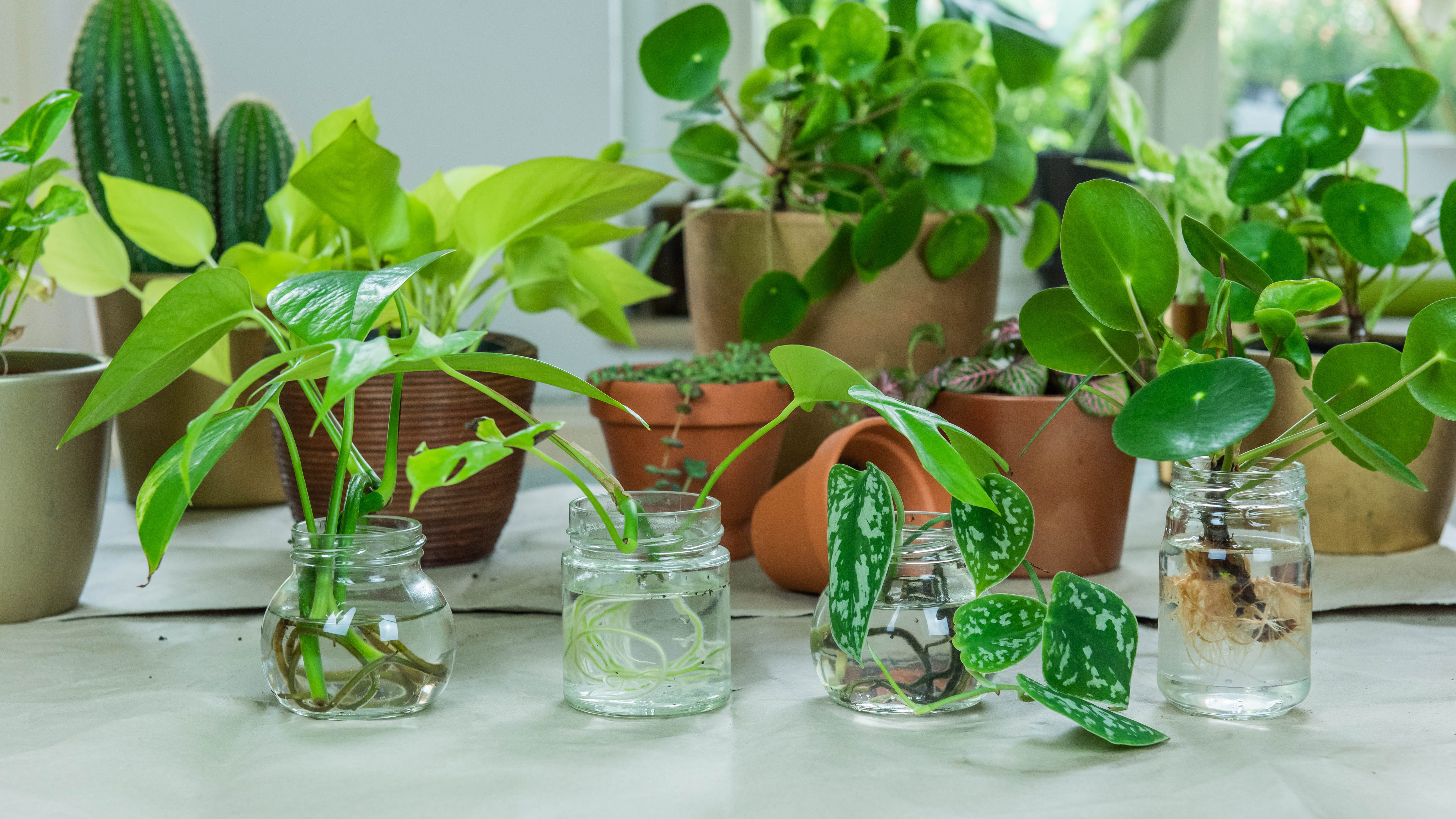
Houseplants make beautiful additions to our homes, and are a great way of bringing the outside in. But if you lack the time for proper plant care, or keep making repotting mistakes, you’ll be happy to know there are some plants you can grow without soil.
Since we all know that soil is a major part of growing plants, this might come as a surprise. However, there are certain water plants with roots that are visibly and structurally different from the roots that are grown for soil. Hydroponics (growing plants in water), allow such plants to adapt to only using the oxygen and nutrients directly in water to survive.
This method simply involves taking a cutting from an existing houseplant, and placing it in a glass jar/glass of water with a little fertilizer. Leave in a bright spot, and you’ll have thriving, new plants — without the need to buy more. In fact, this is one of the easiest ways to grow plants, especially if you don’t have a backyard or have limited space in your home.
While some plants might only last for a season, many can last for a few years. Plus, you’ll never have to get your hands dirty again, clean up spilled soil, or have the worry of drainage and repotting.
So, if you fancy the idea of no-soil gardening, check out these 7 houseplants you can grow without soil.
Alternatively, if you lack natural light, here are 7 plants that will thrive in the shade. And here's why soft water is bad for your plants — according to experts.
1. Lucky Bamboo (Dracaena)
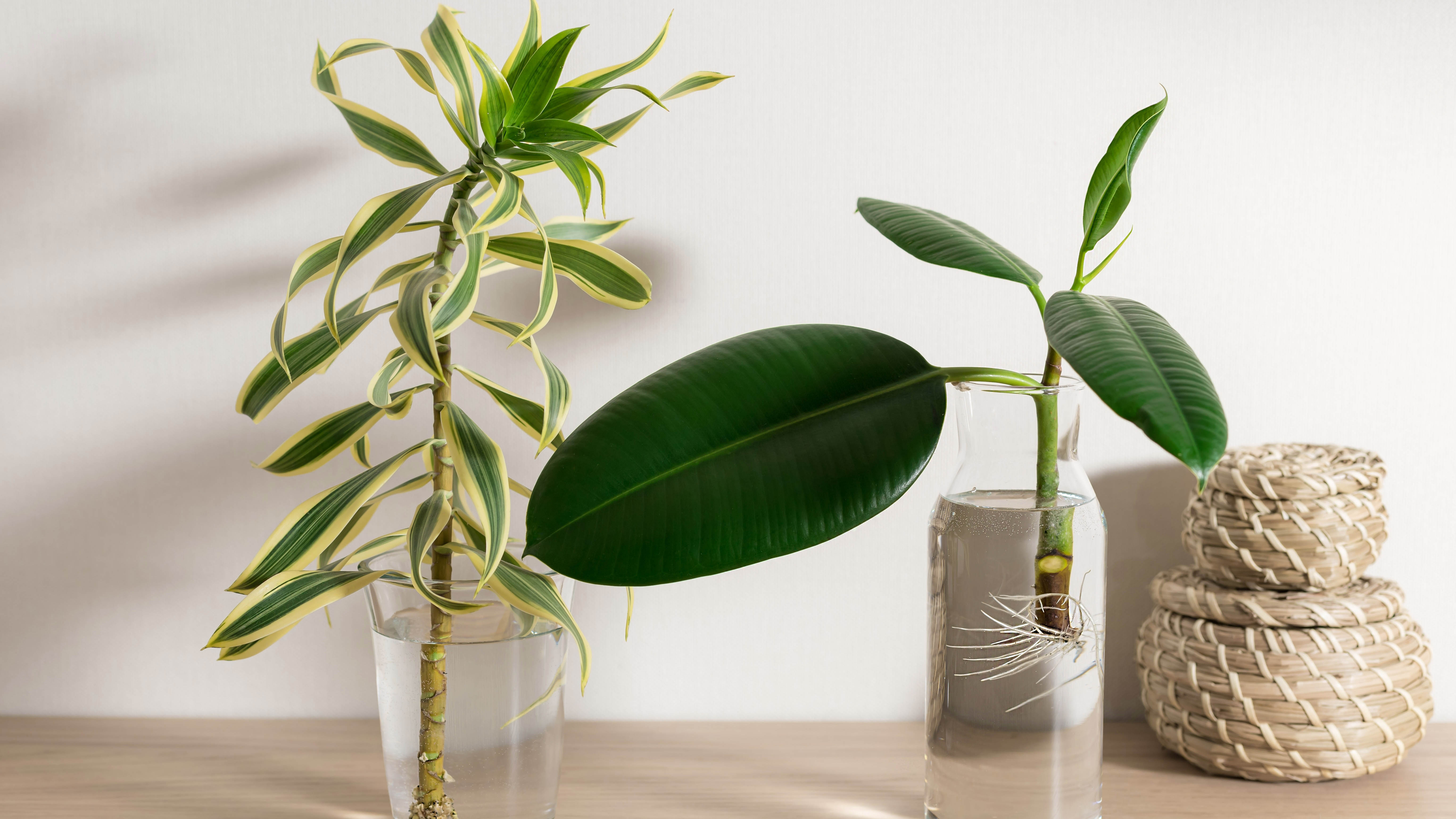
Lucky Bamboo is an attractive houseplant that can be grown in both soil and water. They tend to easily produce roots and offshots in water, as they are known to be “thirsty” plants.
Sign up to get the BEST of Tom's Guide direct to your inbox.
Get instant access to breaking news, the hottest reviews, great deals and helpful tips.
Simply pop it into a glass of water at least an inch deep and fertilize your lucky bamboo at least once every two months — preferably when you change the water.
It’s always best to use distilled, bottled, filtered or rainwater. This is because the stalks can be sensitive to chlorinated water — usually in tap water. If you do use tap water however, leave it to stand for about 24 hours just to let any chemicals evaporate. You want to ensure you keep your bamboo's roots are moist and healthy.
2. Spider Plant
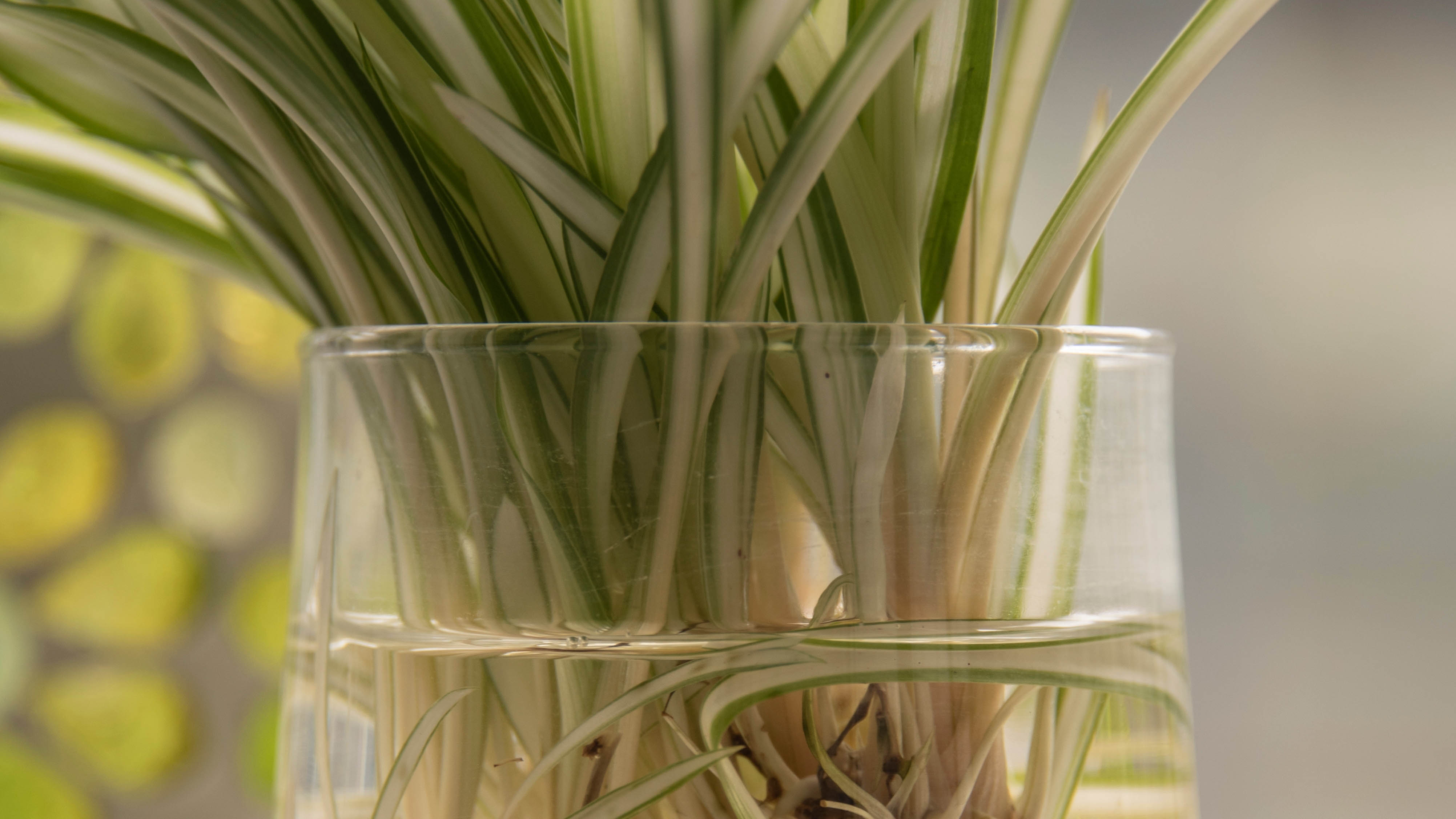
Another easy plant to propagate in water is the Spider Plant. Also known as the Ribbon Plant or Airplane Plant, these are known to grow quickly.
Start off with baby spider plants, rather than a mature plant, and leave them in a glass of water. This will soon grow roots and leaves in a matter of days, as long as you monitor the water levels.
Ideally, add a nutritionally complete fertilizer once the roots start to grow, and change the water once every five to seven days. With regular fertilizing, your spider plant will stand the test of time.
3. Orchids
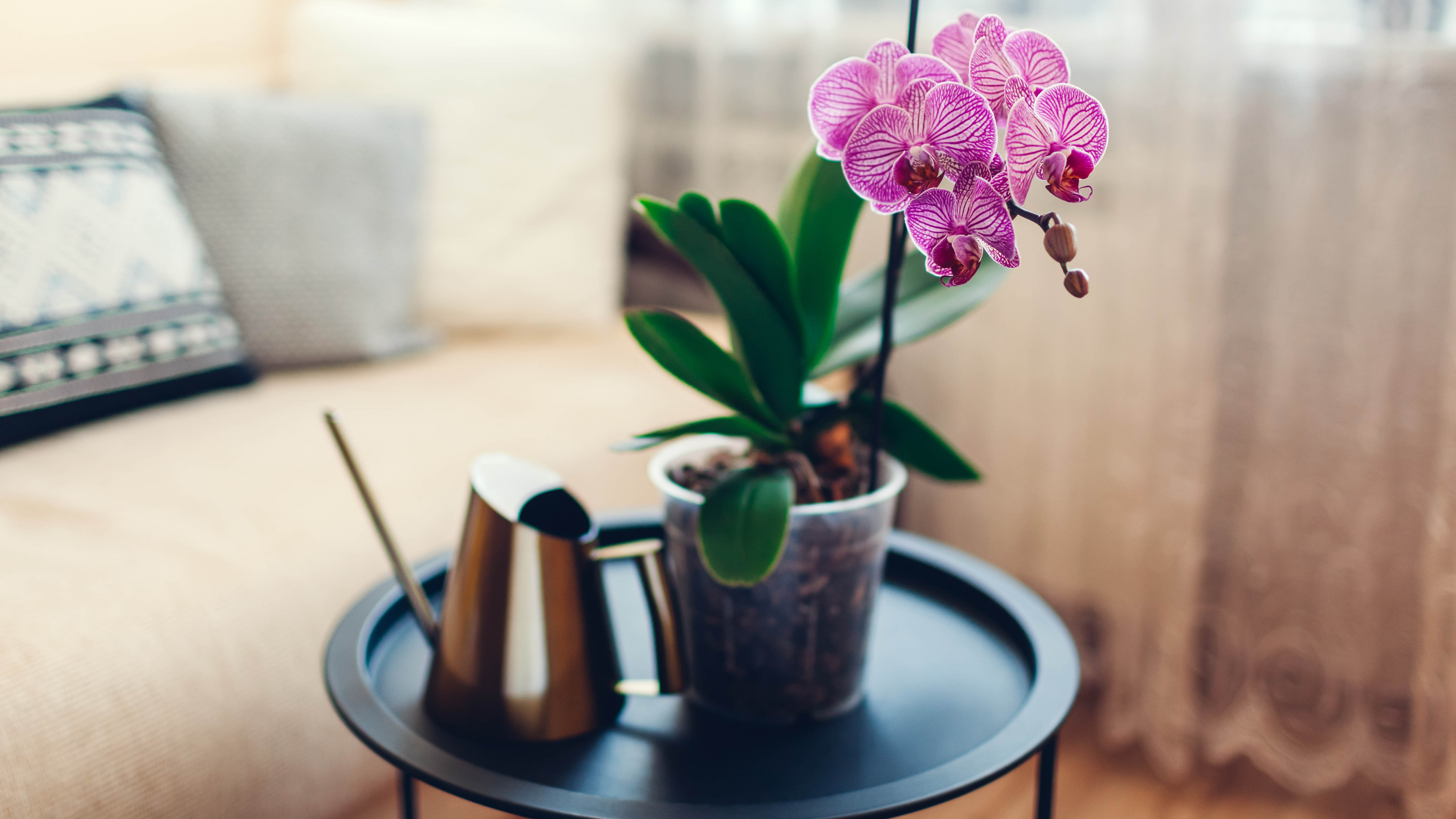
Orchids are popular, flowering plants, available in different species and vibrant colors. And if you’re having trouble caring for an orchid in soil, these can surprisingly do well in just water.
What’s more, orchids are prone to rotting root systems when planted in soil. So when you grow orchids in water, this can avoid those issues, and provide essential nutrients to prevent the roots from drying.
Essentially, there are two methods for orchids to thrive in water. The first is to simply leave your plant in a glass/jar of water and change the water at least once a week or fortnightly. Or you can soak the orchid for two days and then allow it to dry for five days.
Orchid stems can take anywhere between two to three months to grow, however, each species is different, so not all types will thrive the same. In any case, this is a great method of making your beautiful orchids last longer — without the hard work.
If you want to revive an orchid, check out how to get an orchid to rebloom in 6 easy steps.
4. Succulents
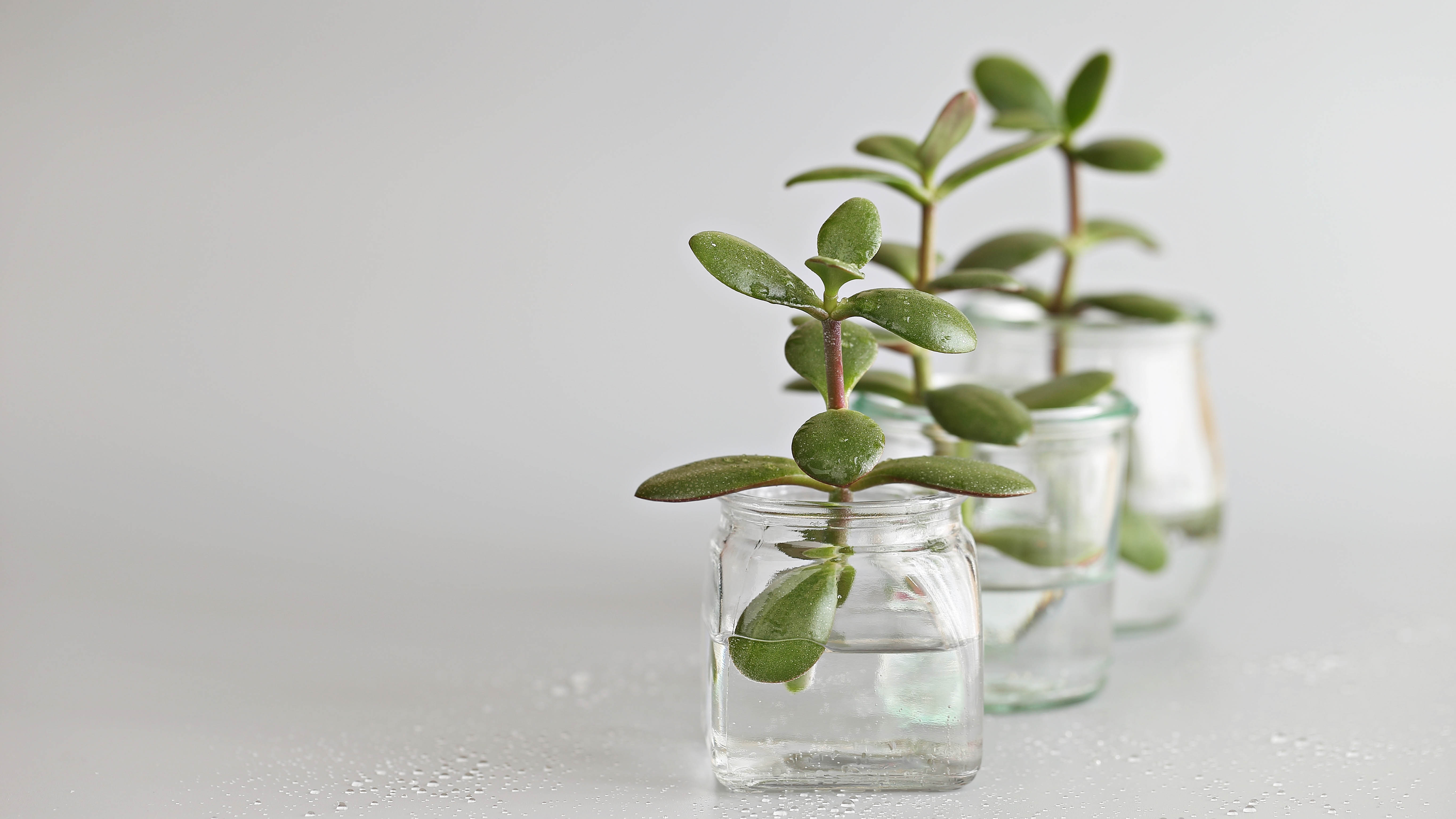
Succulents are another popular houseplant that are grown in both soil and water. And while they are usually sensitive to overwatering, the best types to propagate are Jades, Sempervivum and Echeveria.
First, remove a few leaves from an existing plant, and let the end dry well before popping it into a glass of water. Ensure the tip is right above the water, not fully submerged, and a root system should begin to grow within a few weeks. In addition, keep out of direct sunlight to avoid damage, and monitor the water level.
What’s more, succulents grown in water are known to thrive faster and live longer compared to when growing in soil. For more top tips, check out how to care for succulents, and how to propagate succulents from cuttings.
5. Pothos
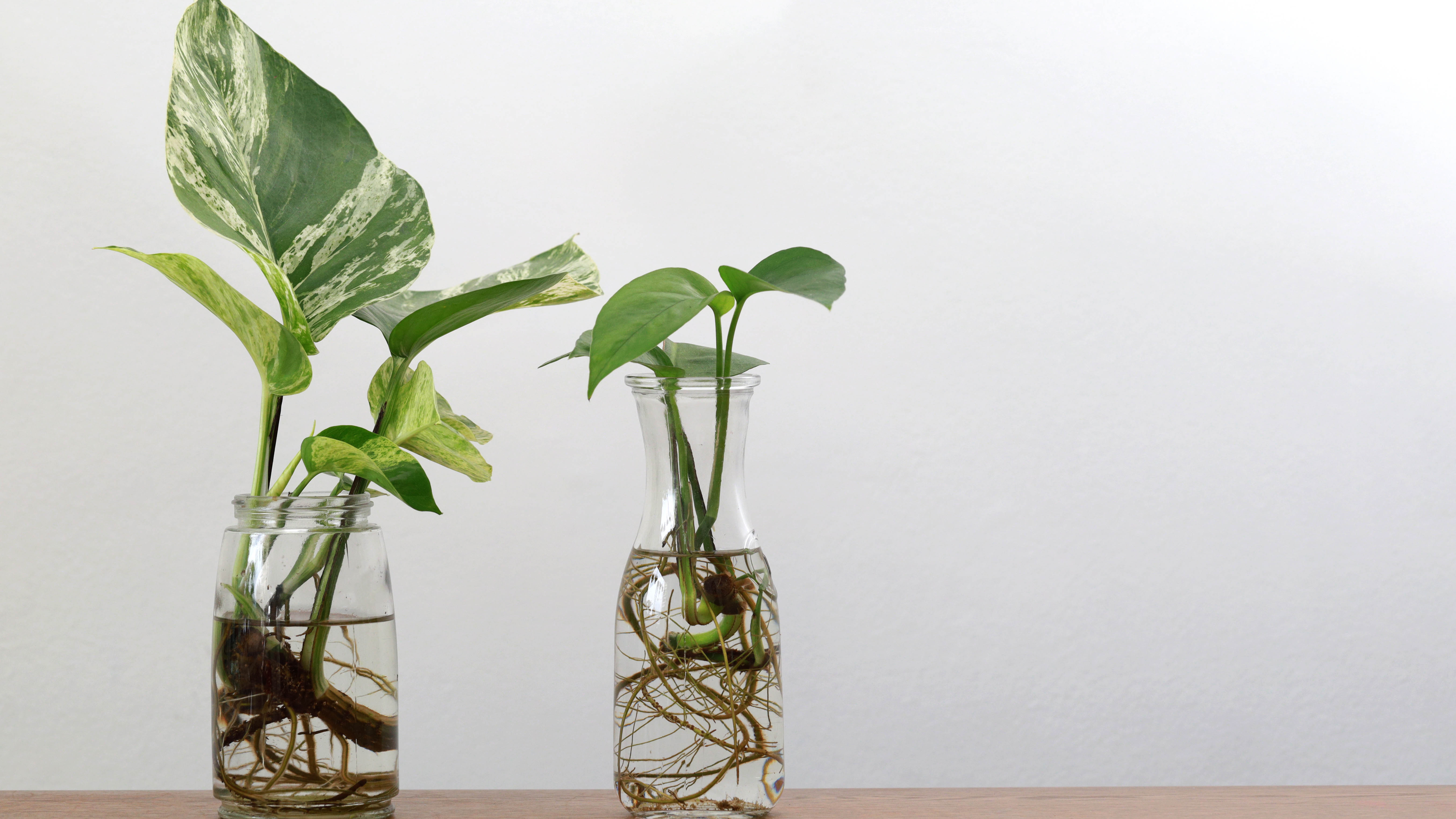
Pothos are popular, vining houseplants that grow easily in water. These are usually low-maintenance plants, and can tolerate low-light conditions.
Simply take stem cuttings that have at least three to four nodes on it — these are the small bumps along the stem where the new roots and leaves will grow. Cut off the bottom leaves, only leaving at least one or two leaves at the top.
Next, submerge the cuttings in a glass or jar of fresh water, ensuring that the leaves stay above the surface. Root growth usually takes a couple of weeks, and it’s advisable to change the water once a week.
6. Philodendron Monstera (Swiss Cheese Plant)
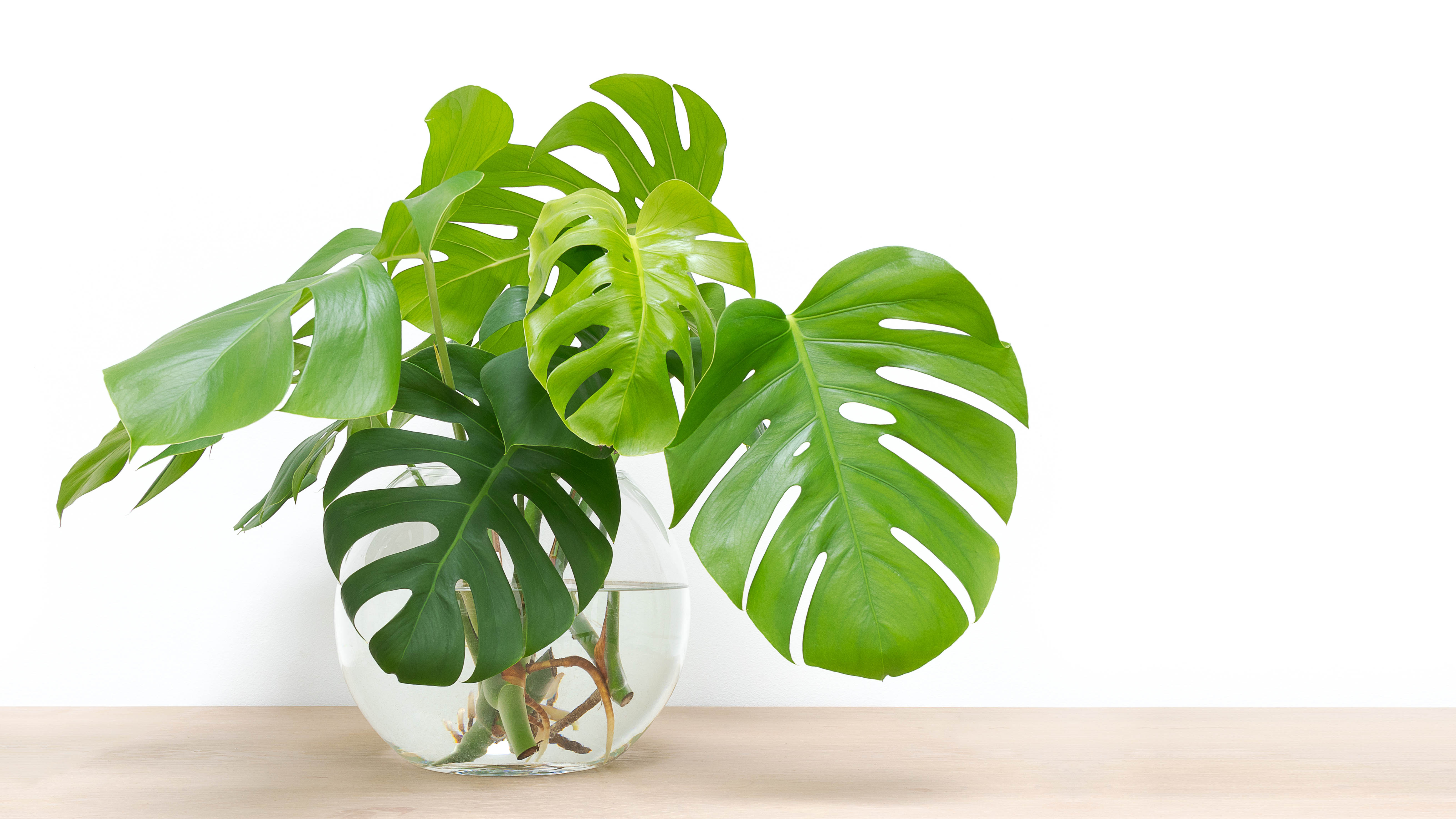
Climbing Philodendron Monstera, also known as Swiss Cheese Plant, is also easy to grow in water. Simply take a cutting of the plant that includes the nodes, and submerge most of the stem in a glass of fresh water. Provided you change the water at least once a week, new roots should develop within a few weeks.
In addition, Monsteras can tolerate humid conditions, and can thrive well in different lighting conditions. Just make sure the plants are not placed in direct, hot sun. With their tropical, lush leaves, these vine plants make a beautiful feature in any home.
7. Ficus Benjamina
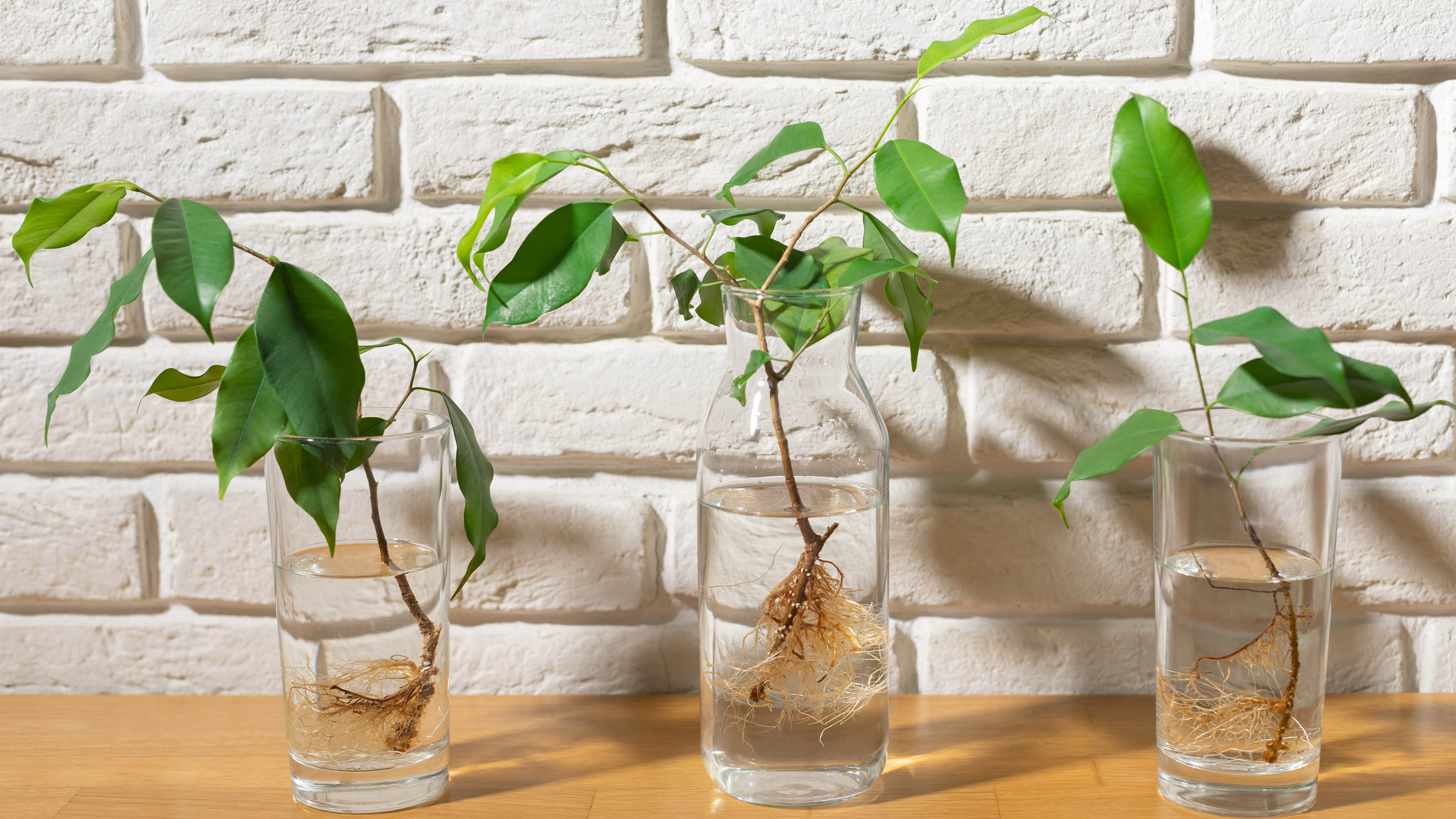
Also known as the Weeping Fig, this tropical plant grows rapidly in water. Popular for its drooping branches, and glossy, dark leaves, stems can be cut and placed in a glass of fresh water. Ideally, the cutting needs to be about 4-6 inches in length, removing any leaves at the bottom of the stem.
Place in a warm location, away from direct sunlight, and the roots will start to grow within a few weeks at least. Remember to change the water every few days, to keep your plant healthy, and lush.
How often do you change your water propagation?
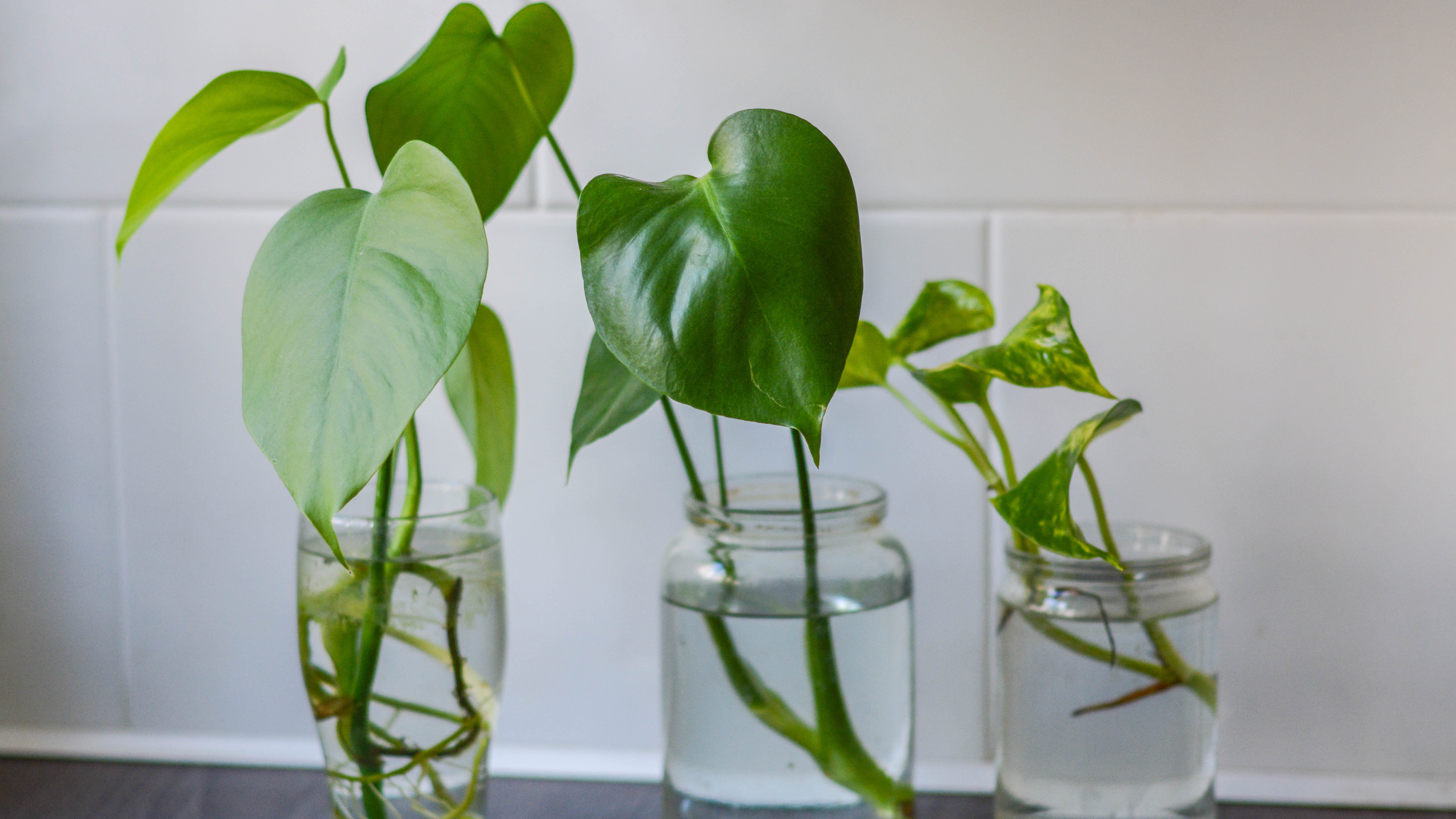
Ideally, you should change the water every few days, and simply top it up when the water levels are low. Always replace the water if there are signs of murkiness or fungi growing, as this will affect the health and condition of the root system.
More from Tom's Guide

As the Homes Content Editor, Cynthia Lawrence covers all things homes, interior decorating, and garden-related. She has a wealth of editorial experience testing the latest, ‘must-have’ home appliances, writing buying guides and the handy ‘how to’ features.
Her work has been published in various titles including, T3, Top Ten Reviews, Ideal Home, Real Homes, Livingetc. and House Beautiful, amongst many.
With a rather unhealthy obsession for all things homes and interiors, she also has an interior design blog for style inspiration and savvy storage solutions (get rid of that clutter!). When she’s not testing cool products, she’ll be searching online for more decor ideas to spruce up her family home or looking for a great bargain!
